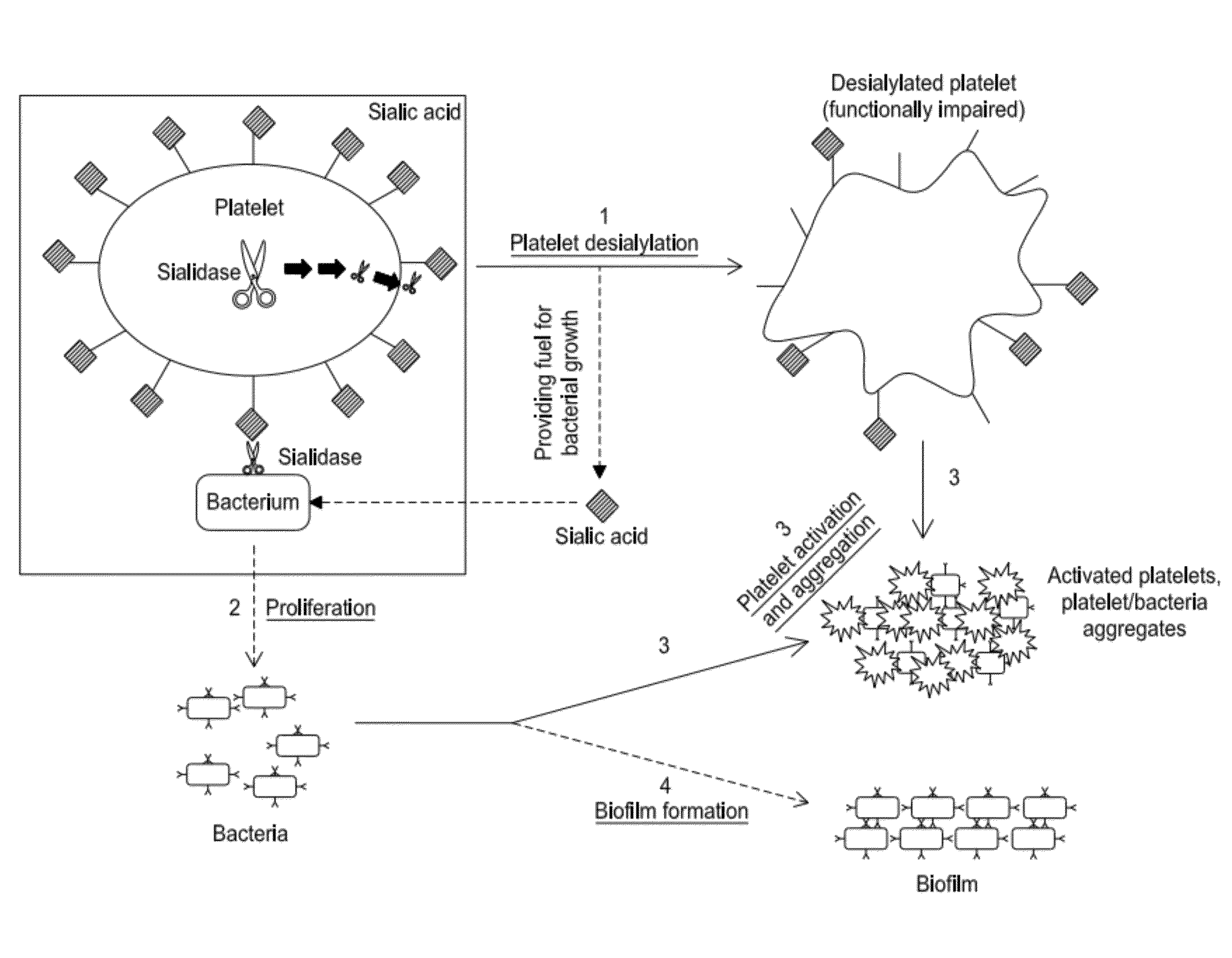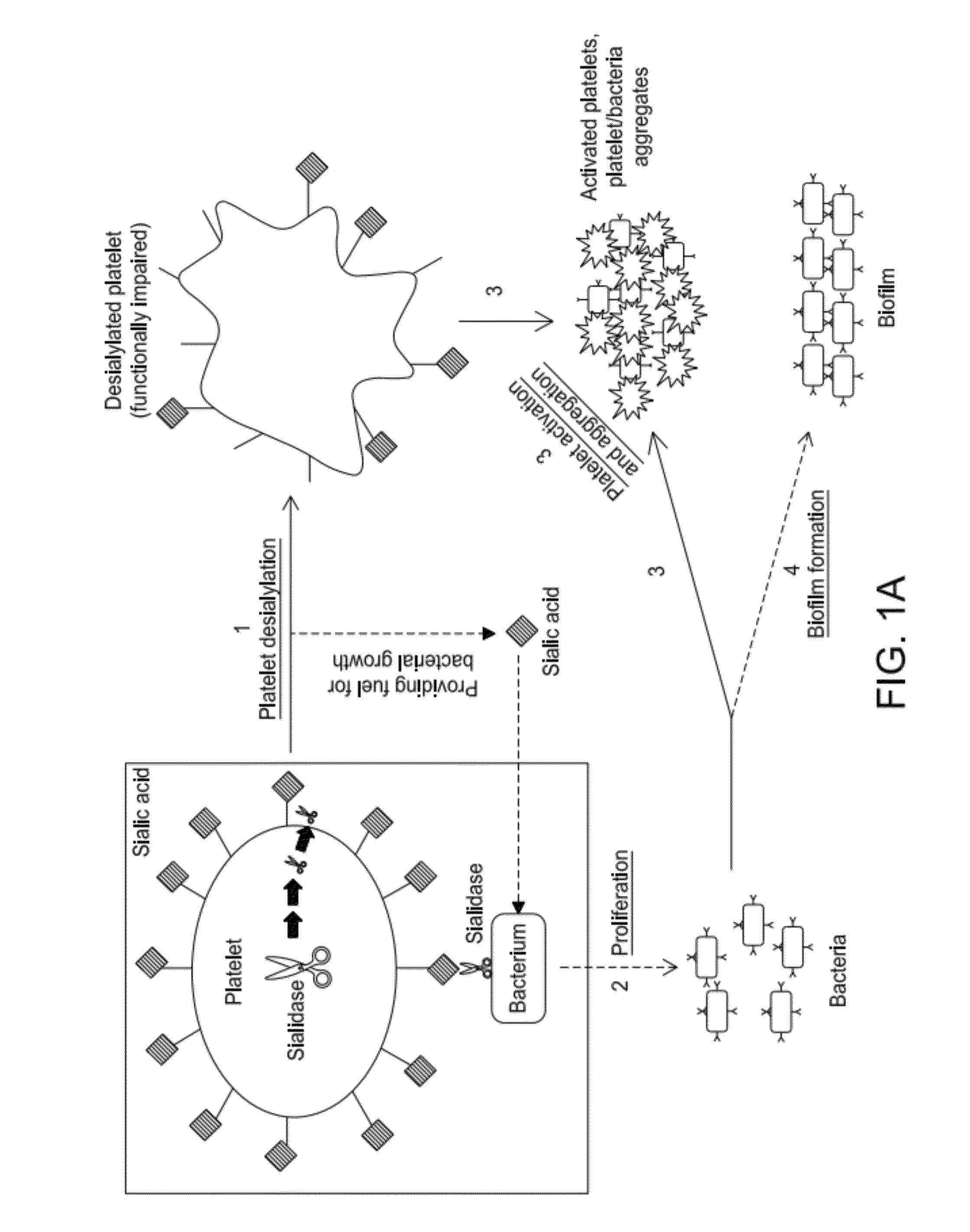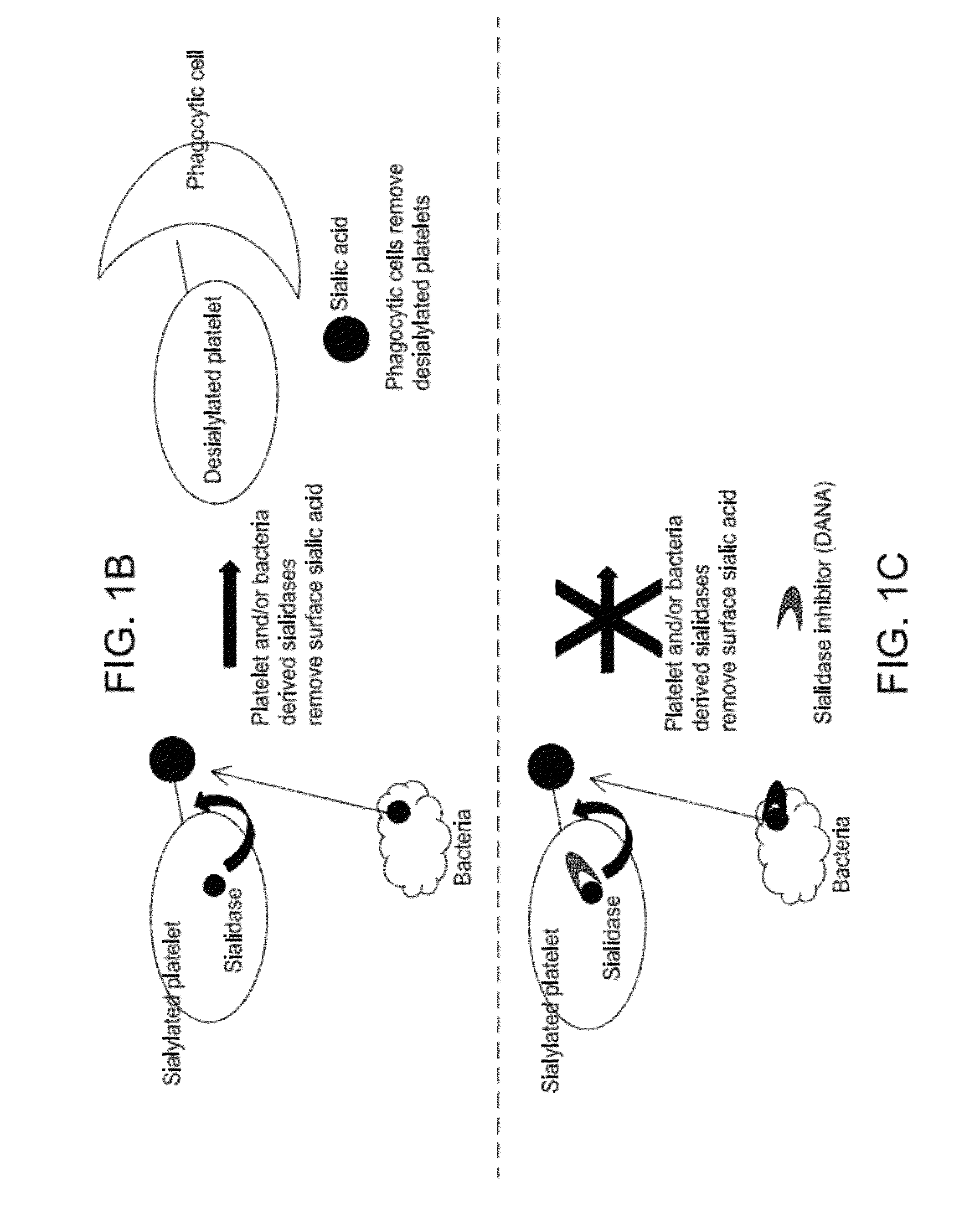Platelet Storage and Reduced Bacterial Proliferation In Platelet Products Using A Sialidase Inhibitor
a technology of platelet products and inhibitors, which is applied in the direction of antibacterial agents, drug compositions, extracellular fluid disorders, etc., can solve the problems of life-threatening spontaneous bleeding, increased risk of cutaneous bleeding, and low platelet counts per l, so as to reduce the activity of sialidase, inhibit the proliferation of one or more bacteria, and reduce the effect of sialidase activity
- Summary
- Abstract
- Description
- Claims
- Application Information
AI Technical Summary
Benefits of technology
Problems solved by technology
Method used
Image
Examples
example 1
Human Platelets: Prolonged Storage at and Below Room Temperature Resulted in Sialic Acid Loss and Increased Sialidase (Neuraminidase) Activity for Human Platelets
Loss of Platelet Sialic Acid During Prolonged Storage Under Refrigeration
[0224]Platelets were stored at 4° C. in the absence or presence of 1.2 mM nucleotide sugars and the total sialic acid was quantified. The platelets were centrifuged, thoroughly washed, and resuspended in 140 mM NaCl, 3 mM KCl, 0.5 mM MgCl2, 5 mM NaHCO3, 10 mM glucose and 10 mM HEPES, pH 7.4. Aliquots of the resuspended platelets were lysed with RIPA buffer (Cell Signaling Technology) for protein quantification using Pierce BCA Protein Assay Kit, or processed to quantify platelet sialic acid using QuantiChrom™ Sialic Acid Assay Kit per the manufacturer's instructions (BioAssays Systems). The assay kit uses an improved Warren method in which sialic acid is oxidized to formylpyruvic acid which reacts with thiobarbituric acid to form a pink colored product...
example 2
Mouse Platelets: Sialidase Activity Increases During Cold Storage of Mouse Platelets and the Sialidase Inhibitor Dana Increases Mouse Platelet Survival In Vivo
Mouse Platelet Sialidase Activity Increases Following 48 h Cold Storage.
[0228]We have determined sialidase surface activity in isolated, intact, fresh mouse platelets and following cooling and rewarming using Amplex Red Neuraminidase (Sialidase) Assay Kit (Molecular probes, Eugene, Oreg., USA). Mouse platelets (2×109) maintained at room temperature or refrigerated for 48 h were isolated and suspended in the provided reaction buffer (0.5 M Tris-HCl, pH 7.2 and 1 mM CaCl2). Platelet derived sialidase activity was measured over 2.5 h at room temperature. FIG. 5 shows that sialidase activity substantially increases following platelet storage in the cold (4° C.) compared to fresh room temperature platelets (RT). Critically, sialidase activity is not plasma derived, as platelets were extensively washed proir to sialidase activity as...
example 3
The Role of Sialylation / Desialylation in Defining the Circulatory Lifetimes of Platelets
[0232]Human Platelets Produce Neu1 and Neu3 and Release Neu1 into Plasma.
[0233]The studies herein address two novel mechanisms that contribute to increases in the clearance of platelets that occur upon storage. The first platelet clearance mechanism, which is induced rapidly by refrigeration in the absence of plasma, is mediated when GlcNAc residues on the N-linked glycan of GPIbα become exposed and are recognized by the lectin domain of the aMβ2 receptor on liver phagocytes. The second clearance mechanism, induced by long-term platelet storage in plasma in the cold, is of slow onset and occurs when GPIbα is desialylated and recognized by the ASGP receptors on both liver hepatocytes and macrophages. Recent data unveils an unexpected role for endogenous sialidases and glycosyltransferases (GTs) in modulating the circulatory life times of normal platelets. In addition, as demonstrated herein, plate...
PUM
| Property | Measurement | Unit |
|---|---|---|
| Temperature | aaaaa | aaaaa |
| Temperature | aaaaa | aaaaa |
| Time | aaaaa | aaaaa |
Abstract
Description
Claims
Application Information
 Login to View More
Login to View More - R&D
- Intellectual Property
- Life Sciences
- Materials
- Tech Scout
- Unparalleled Data Quality
- Higher Quality Content
- 60% Fewer Hallucinations
Browse by: Latest US Patents, China's latest patents, Technical Efficacy Thesaurus, Application Domain, Technology Topic, Popular Technical Reports.
© 2025 PatSnap. All rights reserved.Legal|Privacy policy|Modern Slavery Act Transparency Statement|Sitemap|About US| Contact US: help@patsnap.com



